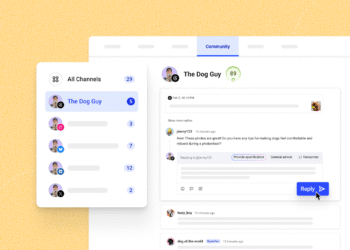Summary: Personalization challenges are rising as marketers face data privacy barriers, AI adoption roadblocks, and fragmented customer insights. With 63% of marketers struggling to deliver tailored experiences, this blog explores how to optimize personalization strategies using automation, segmentation, and data use for improved campaign ROI.
Personalization remains both the holy grail and the headache of modern marketing. Despite AI-powered tools promising 1:1 engagement, 63% of marketers still struggle to deliver truly tailored experiences.
The reasons are complex, from data fragmentation and privacy laws to content silos and misaligned AI workflows. Customer expectations are evolving faster than marketing tech stacks and bridging the personalization gap is no longer optional, it’s a competitive necessity.

Personalization has evolved from greeting a user by their first name to orchestrating intent-driven, predictive experiences across every digital channel. Yet marketers often find themselves overwhelmed by the scale and complexity of modern data ecosystems.
Let’s unpack the main challenges:
1. Data Quality and Integration Issues
Disconnected systems remain the biggest barrier. Marketers juggle email platforms, CRM, and analytics tools that don’t always “speak” to each other. Without coherent customer profiles, personalization becomes guesswork.
2. Privacy-First Data Restrictions
Post-GDPR frameworks, browser tracking shifts, and AI governance policies limit access to behavioral data. Even ethically collected data now demands stricter consent management and transparency protocols.
3. Content Bottlenecks
Automation has accelerated campaigns, but not creative output. Personalization at scale falters when teams can’t produce enough modular content variants to match audience segments.
4. AI Misalignment
AI is only as smart as the data it’s fed. Many marketing teams deploy generative or predictive AI without clear training datasets or context, leading to surface-level personalization that fails to resonate.
5. Skill and Strategy Gaps
Despite increased access to martech, not every team has the expertise to translate AI insights into actionable campaigns. The result? Sophisticated tools are underused or misused.
Customers are increasingly feeling disconnected from brands, with 61% believing they are often treated like numbers rather than individuals. This growing sense of depersonalization highlights the urgent need for businesses to deliver genuinely personalized experiences that make customers feel seen and valued as unique individuals, rather than just data points or statistics.
Step-by-Step Mini Guide: Fixing Your Personalization Strategy
Step 1: Audit Your Data
Map every platform, CRM, email, website, and analytics tools, to identify redundancies and integration gaps. Unified data architecture is the foundation of effective personalization.
Click is a comprehensive marketing platform that seamlessly integrates all your data in one place. Say goodbye to chasing social metrics, event participation details, or email click-through rates, everything you need is accessible effortlessly.
Step 2: Prioritize Data Accuracy Over Volume
Quality beats quantity. Regularly clean your data to remove duplicates, stale information, and unverified contacts.
Step 3: Use Ethical and First-Party Data
Develop consent-based strategies such as preference centers and interactive opt-ins. Customers are more likely to share information when transparency is clear.
Step 4: Start Segmenting
Leverage AI and behavior-based triggers to create live, adaptive segments that evolve with customer actions rather than static demographic definitions.
Step 5: Streamline Content Creation
Design campaigns using reusable content blocks, such as adaptive headlines, localized images, or contextual CTAs that can be personalized across channels.
Even a simple change in terminology, from ‘Cozy’ to ‘Cosy,’ depending on the location, can be a meaningful win.
Step 6: Align AI Tools with Human Oversight
Train your AI models on brand-specific data and continuously monitor outputs for tone, relevancy, and accuracy. Balance machine precision with human creativity.
Step 7: Measure Beyond Clicks
Move from vanity metrics to actionable KPIs like engagement depth, conversion quality, or customer lifetime value to truly gauge personalization success.

Personalization in 2026 will demand more than automation, it requires alignment of data, technology, and human strategy.
While businesses still face difficulties scaling tailored experiences, the solution is not more tools, but better integration, governance, and empathy. Those who can balance privacy with precision and automation with authenticity will lead the next generation of marketing innovation.


















